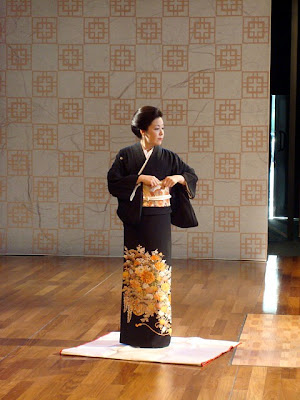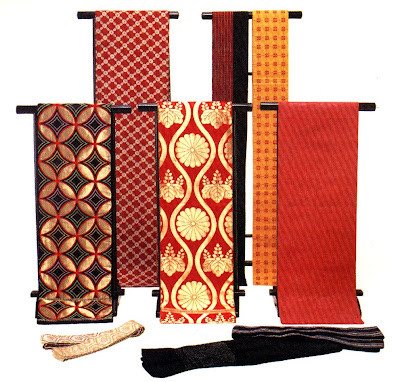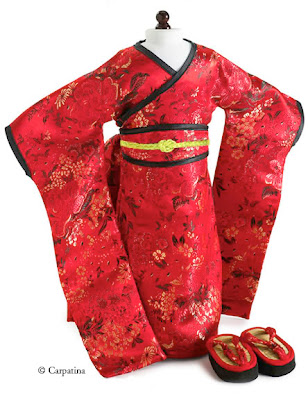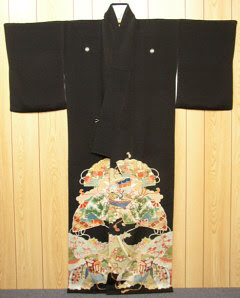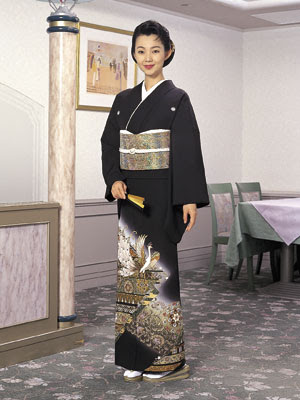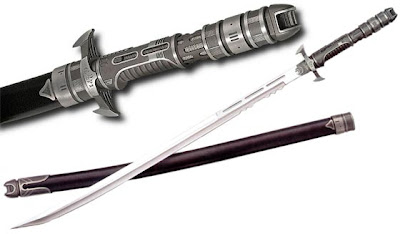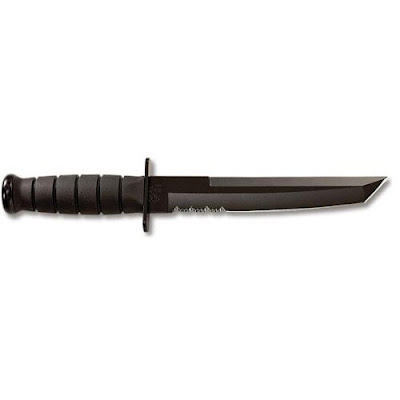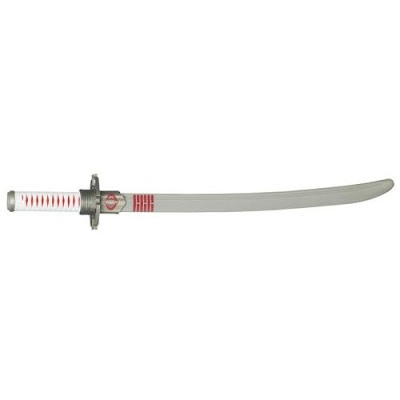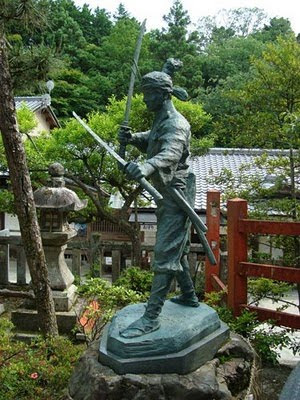Sunday, January 31, 2010
Furisode is a formal kimono
Labels: Kimono, Traditional Japanese dress
Posted by iko at 9:29 PM
Ki Nagashi Kimono
Labels: Kimono, Traditional Japanese dress
Posted by iko at 7:49 PM
kimono For Men
Montsuki''''with''Hakama and haori''.
Montsuki
Kimono is the most formal man for the Japanese people, who in the back there is a symbol of the family (Kamon'''') the user. Kimono worn by men like dark blue or black.
Hakama

Hakama is a kind of trousers worn by a man who also made of dark material.
Haori

Haori is a kind of jacket worn by men while wearing a Kimono.
Montsuki complete with Hakama and haori also serves as the groom dress in Japan. Besides the groom dress. For Japanese people wear complete with Montsuki haori Hakama and worn only at the time attending a very formal ceremony, such as the reception of the award of the emperor / government.
Labels: Kimono, Traditional Japanese dress
Posted by iko at 1:20 PM
The Formal kimono "Tomesode"
Labels: Kimono, Traditional Japanese dress
Posted by iko at 1:09 PM
Saturday, January 30, 2010
Shabu-shabu (しゃぶしゃぶ )
shabu shabu is Apart from very thin slices of beef, other meats can be eaten as shabu-shabu meats such as chicken, lamb, Fugu fish, octopus and snapper. Gyūshabu is the name for shabu-shabu beef. In Hokkaido, shabu shabu is called Ramushabu lamb. Shabu shabu pork called Tonshabu or Butashabu. Nagoya is known in the shabu shabu with Kōchin chicken called Nagoya Niwatorishabu.
Labels: info, japanese foods, shabu shabu
Posted by iko at 1:46 AM
Friday, January 29, 2010
Devine of Katana
Katana is usually paired with the wakizashi or shoto, but it looks like is made shorter, both used aleh warrior class members. Both weapons are used together is called Daisho, and represents social power and personal honor of the samurai. Long sword used for open combat, while the shorter side is used as a weapon (side arm), more suited for stabbing, close combat, and seppuku (a form of ritual suicide).
Katana mainly used for cutting, and preferably used with two handrails. Unlike most of any country swords, Katana has a different way of laying on the hips wearer, unlike other sword wield the sword with the blade downward, the katana is the opposite, so that the blade pointing up, is intended to facilitate a samurai in take a vow of blood, enough to attract little sword hilt and the blade menggoresnya. While the practical art of using the sword to the original purpose has been worn kenjutsu and laijutsu turned into a modern martial art.
The original Japanese sword is now a rare item, although that really antique can be obtained by a very expensive price. Katana and wakizashi are made modern by a few licensed practitioners who are still making this weapon crafting now, even though the katana "Type 98" is also rare.
Labels: - exercise and how to care for Japanese Sword, info, Japanese short swords, Japanese Weapon, Traditional Japanese Weapons
Posted by iko at 1:11 AM
Thursday, January 28, 2010
Domburi
Domburi use of bowls, the rice or soup is eaten by by picking up the bowl with your left hand and using the chopsticks with your right hand. If you are left-handed it is acceptable to do this in reverse. Bowls of soup such as noodle soup or Donburi may be lifted to your mouth but a bowl of rice may never be lifted your mouth. The contents must be eaten with chopsticks.
Labels: Domburi, info, japanese foods
Posted by iko at 8:23 PM
Homemade Sashimi
Types of Sashimi include:
- • Maguro Sashimi - uses raw lean tuna
- • Toro Sashimi - fresh fatty tuna
- • Ebi Sashimi - fresh tiger prawns
- • Saba Sashimi - raw mackerel
- • Ika Sashimi - cleaned squid
- • Tako Sashimi - octopus
Labels: info, japanese foods, Sashimi
Posted by iko at 5:14 PM
Bushido the "Way of the Samurai"
Tracing of the history of its development, bushido values began to emerge and flourish in the era / feudal era of ancient Japanese government holds. In feudal times, the social stratification or grouping in the community is very tight run, where the Bushi / samurai highest position in the pengkelasan system. The samurai class is very well respected and feared by other communities in the lower classes, especially in the Tokugawa era, when the political implementation of sakoku (self closing) from the outside world.
Nearly 250 years of the samurai was in the highest position, so that kesamuraian values become very tersosialisasikan in Japanese society. Even though sakoku finally ended, and Japan to open itself Comodor forced by Perry from the United States (during the Meiji Restoration) occurs, these values remain unshakable because it was fragmented in a strong community (already processed for hundreds of years).
If you look at the source, bushido values come from:
1. Teachings of Buddhism. Where there are feelings of trust, calm on the fate, resigned to peace in the things that are not inevitable. Example: peace of mind to face the danger / disaster, the boredom of life, familiar with death. In addition, in Hinayana Buddhism there is no concept of the Creator and the concept of sin. So in this case, committed suicide had nothing to do with the value of religious doctrinal norms. There is only the concept of karma in which "good deeds will be good too", and vice versa.
2. Shintoism. The values of loyalty to the emperor / leader and respect for ancestral spirits
Labels: info, Samurai (侍 or 士)
Posted by iko at 9:19 AM
Denine of Samurai (侍 or 士)
A more appropriate term is Bushi (武士) (literally: "armed men") that is used during the Edo period. However, the term used for samurai warrior elite of society, and not for example, ashigaru or foot soldiers. Samurai are not tied to the clan or working for the employer (the daimyo) is called a ronin (literally: "the wave"). Samurai who served in the region called hanshi han.
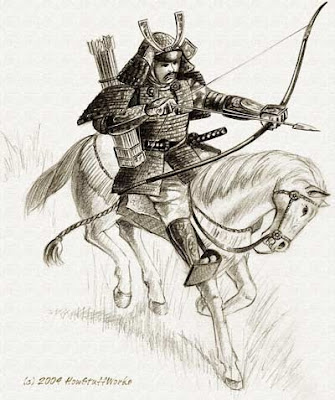
Samurai is considered to be polite and educated, and during the Tokugawa shogunate gradually lost their military function. Samurai At the end of the Tokugawa era, samurai in general is common to kakitangan daimyo, with their swords only for customs purposes. With the Meiji reforms in the late 19th century, the samurai class was abolished as a distinct and replaced with a national army to resemble Western countries. However, the strict nature of the samurai, known as bushido still present in contemporary Japanese society, as aspects of their lifestyle others.
Labels: info, Japanese Weapon, Samurai (侍 or 士), Traditional Japanese Weapons
Posted by iko at 8:40 AM
Ramen - the original Japanese noodle soup
Ramen noodles are made from dough of wheat flour, salt, and a type of alkaline water containing potassium carbonate and sodium bicarbonate. Eggs are sometimes used instead of alkaline water. Noodles are usually flat, fat, thin, and ribbon-like. They can be straight or wrinkled and they come in yellowish hue. Ramen is a typical Japanese food though it originated in China. It is usually cooked with broth or boiling liquids flavored with meat and vegetables. Toppings are usually added like pork and onions to add flavor.
One example of ramen noodles that gained popularity is yakisoba. Yakisoba means "fried noodles." It is prepared with vegetables, bite-sized pork, carrots, cabbage, salt and pepper. It is usually served in a plate. Another way of preparing yakisoba is by piling the noodles. The piled noodles are placed on sliced bread and showered with pickles.
Labels: info, japanese foods
Posted by iko at 1:59 AM
Wednesday, January 27, 2010
Sashimi has become more and more popular
There is an exception to this logic within the realm of sushi. Sashimi, is actually sushi without the rice. This is a perfect option for those who tend to have a diet that is too rich in high glycemic foods
Sashimi is a form of Japanese food with fresh seafood straight excellent eaten raw along with seasonings like soy sauce, grated ginger, and wasabi.
Fresh seafood such as fish, shellfish, and crayfish served in a small slice of easy to eat, are small shrimp than just peeled the skin and removed his head alone.
Sashimi is seafood that is sliced thin and intended to be eaten raw. For grilling purposes, you can do with a lesser grade, but it's still good to know a little about what constitutes the best tuna before you make your selection.

Thinly cut seafood and shellfish of your choice, served with a spicy soya dipping sauce and are eaten raw. Types of Sashimi include:
- • Maguro Sashimi - uses raw lean tuna •
- Toro Sashimi - fresh fatty tuna •
- Ebi Sashimi - fresh tiger prawns •
- Saba Sashimi - raw mackerel •
- Ika Sashimi - cleaned squid •
- Tako Sashimi - octopus
Labels: info, japanese foods, Sashimi
Posted by iko at 8:34 PM
Health Benefits of Sushi
Such fat found in Japanese sushi is mostly unsaturated fat. An example is Omega-3, good for the heart.There is no fat introduced in sushi's preparation for it is served raw. The high levels of protein in Sushi are found in fillings.
These are fish, tofu, seafood, egg, and many others. The vegetables used for sushi are rich source of minerals and vitamins. And the rice and the vegetables used are sources of carbohydrates.
Labels: japanese foods
Posted by iko at 5:59 PM
Sushi (鮨, 鮓,or すし, 寿司 )
This traditional Japanese dish often topped with other ingredients including fish, various meats, and vegetables is usually dipped in condiments like soy sauce, wasabi and pickled ginger before eating and it is eaten with chopsticks or by hand.
Labels: japanese foods
Posted by iko at 5:40 PM
Thursday, January 21, 2010
Special Swords for Japanese 'Special Forces'
Today, The ninja sword craft is highly specialised art which is again attracting younger members of society into its ranks as the knowledge that was lost during the war years continues to be rediscovered. Japanese swords are highly prized by collectors and connoisseurs around the world for their incredible decorativeness and quality and if you ever get the chance to see an exhibition of any of these fine weapons you should not miss it.
Labels: ninja japanese sword
Posted by iko at 4:01 PM
Wednesday, January 20, 2010
The Seppuku Ritual
The samurai dressed ceremonially sometimes seated on special cloths, prepares for his death by writing a death poem. Standing beside him is his selected attendant (kaishakunin), the samurai would open his kimono, take up his Tanto or Japanese knife and plunge it into his abdomen and make a left to right cut. The kaishakunin then performs dakukubi or a cut in which the warrior was all but intentionally decapitated or having his head cut off. Such task should be carried out with precision requiring the kaishakunin often to be a skilled swordsman. It is usually agreed in advance that the kaishakunin swiftly do the decapitation as soon as the dagger was plunged deep into the abdomen.
Labels: info, Japanese short swords
Posted by iko at 7:41 PM
A Tanto knife
A Tanto knife may appear as one of the wide variety of ordinary, modern Japanese short swords. Did you know that Tanto knife plays a part in a deadly Japanese ritual? Let's turn back time and find out its part in a Japanese ritual called Seppuku.Seppuku was an integral part of feudal Japan way back during the period of 1192 to 1868. Japanese uses Seppuku as a formal term for ritual suicide.
It is also called Hara-kiri when used as a common language term. It was developed as an important part of the code of discipline for bushido or a code of the samurai warrior class. Seppuku entails stomach-cutting disembowelment or removal of some or all of the vital organs found in the abdomen of a samurai.
Labels: Japanese short swords
Posted by iko at 1:34 AM
Tuesday, January 19, 2010
Storm Shadow Ninja Sword
Labels: ninja japanese sword
Posted by iko at 11:58 PM
The Best Japanese Samurai Sword

 Have you held a Japanese Samurai sword before? There is a certain feeling of power and prestige that comes with the feel of an authentic samurai sword. I'm sure that you have heard of the Katana and Wakizashi, but did you know that there are several other types of Japanese Samurai swords that might be better for you?
Have you held a Japanese Samurai sword before? There is a certain feeling of power and prestige that comes with the feel of an authentic samurai sword. I'm sure that you have heard of the Katana and Wakizashi, but did you know that there are several other types of Japanese Samurai swords that might be better for you?Labels: Traditional Japanese Weapons
Posted by iko at 9:31 PM
Friday, January 15, 2010
Early history of nihontō.
Tachi by Norishige ca. 1300 CE, which made ō-suriage (very abbreviated) during the Edo period to be used as a "katana" by cutting and reforming the original nakago higher forefront.
Before 987, examples of Japanese swords are straight chokutō or jōkotō and others with unusual shapes. In the Heian period (8th to 11th centuries) sword-making developed through techniques brought from China through trade in the early 10th century during the Tang Dynasty and through Siberia and Hokkaido, the Ainu people territory. Ainu used warabite-To (蕨 手 刀?) And this affects nihontō, which was held with two hands and designed for cutting, not stabbing. According to legend, the Japanese sword was created by a smith named Amakuni (ca.700 AD), together with the folded steel process. The folded steel process and single edge swords had been discovered in the early 10th century Japan [12]. Swords forged between 987 and 1597 called the koto (古 刀?) (Lit., "old swords"); is regarded as the pinnacle of power the Japanese army. Initial model uneven curves with the deepest part of the curve to the handle. When the era of change tends to increase the center blade curve.
The nihonto as we know it today with a deep, graceful curve has its origin in shinogi-zukuri (single-edged sword with hills) tachi which developed around the middle of the Heian period to service the needs of the military class was growing. Shape reflects changes in the form of war in Japan. Cavalry is now the main combat units and the older straight chokutō particularly unsuitable for fighting from horseback. Curved sword is a weapon that much more efficient when wielded by a warrior on horseback where the curve is enough to add the knife downward force of the cutting action.
The tachi is a sword which is generally larger than the katana, and subject to deduction depending on the lower edge. This is a standard form of carrying the sword for centuries, and eventually will be replaced by the katana style where the blade passed through a belt worn, the top edge. The tachi is used depends on the left hip. Signature on the tang (nakago) of the blade is written in such a way that will always be outside the sword when worn. This characteristic is very important in recognizing the development, function and different styles of wearing swords this time and so on.
When worn with full armor, the tachi would be accompanied by a shorter blade in the form known as koshigatana ( "waist sword"); type of short sword with no hand-guard (tsuba) and where the handle and sheath meet to form a style of mounting called aikuchi ( "meeting mouth"). Dagger (tanto), also conducted for close combat fighting and carrying a generally for personal protection.
Mongol invasions of Japan in the thirteenth century to encourage further evolution of the Japanese sword. Often forced to abandon traditional mounted archery for hand-to-hand combat, many samurai found that their swords are too fragile and susceptible to damage when used against the thick leather armor of the invaders. In response, the Japanese began to adopt a thin and simple swordsmiths lines patience. Certain Japanese swordsmiths this period began to make knives with thicker backs and bigger points as a response to the Mongol threat. [13]
In the fifteenth century, Jidai Sengoku civil wars broke out, and needs a big sword with combat malignancy causing a very artistic techniques of the Kamakura period (known as the "Golden Age of Swordmaking") which must be abandoned and replaced by more utilitarian and disposable weapons . Nihontō exports reached its peak during the Muromachi period when at least 200,000 nihontō sent to the Ming Dynasty China in official trade in an effort to absorb the production of Japanese weapons and make it more difficult for pirates in the area of arms.
On the 15th and 16th centuries, samurai who increasingly find the need to use a sword near the residence along with the increasing use of foot-soldiers armed with spears lead to the creation uchigatana, both in one hand and the two forms. As the Sengoku civil war going on, uchigatana evolved into the modern katana, and replaced the tachi as the main weapon of samurai, especially when not wearing armor. Many more are shortened in tachi-15-17 century to meet the demand for katana.
The aircraft were destroyed as time went on and firearms were introduced as a decisive force on the battlefield. At the end of the Muromachi period, the Tokugawa shoguns issued regulations controlling who could own and carry swords, and effectively the standard description of a nihontō.
Labels: Traditional Japanese Weapons
Posted by iko at 5:11 PM
Thursday, January 14, 2010
Miyamoto Musashi
Musashi is not a statesman, of noble birth or a famous general. He just swordsman in the half end of his life and then go into the arts. As a warrior she did not have a lord (daimyo) where the service. Most of his life was spent with a wandering samurai (shugyosha) who explored throughout Japan and remains free spirit with a ronin (masterless samurai man's land).
But as he was not a swordsman swordsman most. Until the age of 30 he has done about 60 battles and was even undefeated. The first victory gained at the age of 13 years, with killing one of the older warriors. This is very unusual considering he did not have formal teacher who taught him to play a sword. In fact the opposite is bertarungnya famous warrior-warrior who came from big universities.
Duel Musashi's most famous moment with Sasaki Kojiro Funa Island (located between Honshu and Kyushu). According to the story, the Japanese were still talking about this duel until now. At that time, Kojiro also has earned a reputation as an invincible swordsman in the western province. Kojiro using the sword of the famous long-Drying Pole named Musashi was carrying a wooden sword, as is often used in a duel-other-duelnya who carved from an oar. The match ended with the death of Sasaki Kojiro.
After the fight he began to struggle less involved, let alone who to bring his opponent's death. He became focused to explore all the arts. In his old age he was known as an artist with a lot of ability. India ink painting, calligraphy, to create a sculpture. Again, like the ability to play a sword, his artistic maturity was obtained with no teachers.
At the end of his life he wrote a book which later became master piecenya. Book thin entitled The Book of Five Rings, which remained popular until now. This book contains reflections on the Way of the Sword and contains thoughts about philosophy of life. Called the Five Rings because he divides his book into five chapters: Chapter Land, Fire, Water, Wind and Emptiness.
Glance at the story of his life, perhaps this is what makes such a big influence for Musashi Japanese people. Judging from Musashi's origins are not descendants of the famous clan. Whereas in the feudal era, the clan can mean everything. Self-reliance and independence also makes many people wonder. He never had a teacher or master, as the samurai most of the time.
There is an interesting story as Musashi would be fighting against the Klan Yoshioka. Before the battle he could go to a temple and prayed for the help of the gods. Some time after the prayer, then shame swept over her. Musashi believed he did not deserve to rely on gods. Although he menghormari gods but only himself who should be relied upon.

Musashi is a summary of the top because the self-made, without connections or descendants. And achievement that he paid with steely determination, independence, hard work, discipline, integrity and unparalleled perseverance.
Labels: info, Traditional Japanese dress, Traditional Japanese Weapons
Posted by iko at 1:05 PM
Wednesday, January 13, 2010
Japanese sword, or nihontō
Although they are pole-mounted weapons, Yari naginata and is still regarded as part of the family nihontō because the methods they forged.
Japanese swords are still commonly seen; antique and modernly-forged swords can easily be found and purchased. Modern, original nihontō made by several hundred swordsmiths. Many examples can be seen in the annual competition organized by the All Japan Swordsmith Association, under the auspices of the newly formed (Dec.1st, 2008) NihontōShinko Bunka Kyokai, lit. Society for the promotion of Culture of the Sword
Japanese.
Labels: Traditional Japanese Weapons
Posted by iko at 10:37 PM
Masami Shioda the warriors in modern times
Shouts a short, practical, with the Japanese language and Ingris broken. Like a movie that came out of Kung Fu. Relax for a while after a move, then they practice again with a jerk and shouting.
Hyono is Shinkageryu proficiency courses to use the sword in Manhattan on a mission to preserve the ancient culture of the samurai. This martial art founded in Japan in the country during the war period (1480 - 1570) and has been preserved, according to Shioda.
"You could say there was no difference in what we practice now when compared to the old samurai era," said Shioda who is a teacher of the course in the City of New York. "That's why you can say this is not as popular as Kendo."
Ready smile and laughter, with a slow eye movement and simple behavior, not many would think samurai skills possessed this person. He teaches courses in space leased from the dance studio. Classical music from dance classes in the next room could be heard faintly. Seemed to disappear by voices pounding their sticks.
An Ancient Culture
[Masami Shioda Sensei Vernon Church and his students practice during the course. (Joshua Phillip / The Epoch Times)]
Masami Shioda Sensei Vernon Church and his students practice during the course. (Joshua Phillip / The Epoch Times)
Since the martial arts tradition forbade men to charge a fee for the course, Shioda do kegiatanya in the studio to hire. He and his students share the cost of studio rental. "He did because he loved her," Church said one of his old pupils.
After hitting each other with the sword exercise their respective turn and stopped just inches from the neck or wrist respectively. Looks like going to hurt each other. After doing a lap with his students, Shioda paused to correct the student movement. "Like this," he said, taught Vernon swept the leg.
Shioda Shinkageryu has engaged more than twenty years. He grew up in Kamakura, 72 km from Tokyo. "This is not the practice in my town," he said in Japanese to be translated by a student.
"I am not satisfied with Kendo," he said, recalling the exercises in tekuni ever before. "Shinkageryu very famous name but I do not think is living in this modern era. Even in Japan, people who practice Shinkageryu may only 500 people."
This art in the maintained continuously from traditional clothing to his training methods.
"We are very pleased the way people think of the past," said Shioda.
Shioda added Shinkageryu part of the mission is to conserve the culture of the samurai. "What is important is to maintain the gist," he said. "All these things can only come in the days of the war, and to keep it that's passed on the essence of what we're trying to preserve."

"For me there is something very unique from this art used in Japanese sword against empty hands," he said. "I do not want to call it like a cheap words like 'Energy Samurai,' but something really authentic Japanese, is very unique in the art and are used only in the Japanese sword arts."
Berkultivasi Truth
Despite the rapid movement and loud sounds of a bamboo sword shinai Shinkageryu Fukuro, this art is full of peace.
The founder of Aikido, O-Sensei Morihei Ueshiba, once said, "The Way of the Warriors has been incorrectly interpret. It is not intended to oppress or kill others. Those who want the competition to be stronger than the others it was a big mistake."
Japanese men with small stature, became famous old 80's saying, "Way of the Warriors is to avoid assassination."
Shioda pilosofi matching share on beladirinya art. He said that through training, he and his students "learn little by little about life."
There are many wrong concepts about the martial arts, clear Shioda. He said people often come to him wanting to fight, or challenge it. He recalls when a daring swordsman when he was young, and Shioda accepted. He said the game 50-50. I'm a little lost because he was constantly stabbing my toes. "Shioda laughed when mimicking stabbing motion at the foot of his students.
"It is very difficult to survive," he added.
The bulk of the technique is to control and use less energy to get bigger results. Shioda adding he wants his students to understand "that you do not need speed, you do not need power. Only the physical and dynamics that you need and you can have the potential to achieve greatness."
"It's not about speed and muscle. It is a technique," he said. "That's what makes it very attractive."
He added in the teaching philosophy and principles of martial arts, he wanted his students "loved the first, then if still a lack of knowledge for even more fun, then became part of it."
Tuesday, January 5, 2010
Honjo Masamune
Labels: Japanese Weapon, Traditional Japanese Weapons
Posted by iko at 3:23 PM
Monday, January 4, 2010
Muramasa Sengo
Oscar Ratti and Adele Westbrook said that Muramasa "was a good swordsmith but cruel and ill-thought, which tercemin on homemade swords ... The sword was believed to be blood thirsty and to encourage their soldiers to commit murder or suicide."
When the shogun Tokugawa Ieyasu, a sword made by Muramasa no longer popular because it is believed many people killed deket Ieyasu.
Labels: Japanese Weapon
Posted by iko at 3:17 PM
Kusanagi
 For the Japanese, the legendary sword Kusanagi is the equivalent of Excalibur. His full name is Kusanagi-no-Tsurugi ( "Grass Cutting Sword"). According to legend, the Sword is obtained by a god named Susanoo while the fourth tail of a dragon-headed monster and a tail eight, Yamato-No-Orochi.
For the Japanese, the legendary sword Kusanagi is the equivalent of Excalibur. His full name is Kusanagi-no-Tsurugi ( "Grass Cutting Sword"). According to legend, the Sword is obtained by a god named Susanoo while the fourth tail of a dragon-headed monster and a tail eight, Yamato-No-Orochi.Then Ameterasu dedicated to the goddess. He says the sword is stored in Atsuta Shrine, but until now no one had not done outside the temple, except the emperor, who had seen this sword.
Labels: Japanese Weapon
Posted by iko at 3:12 PM
